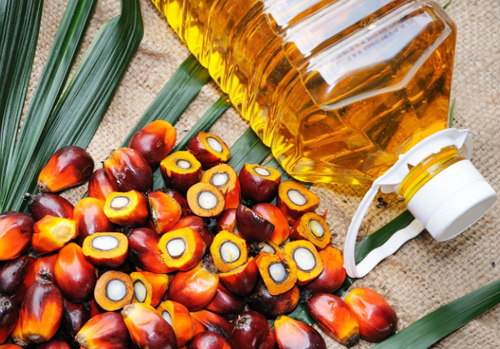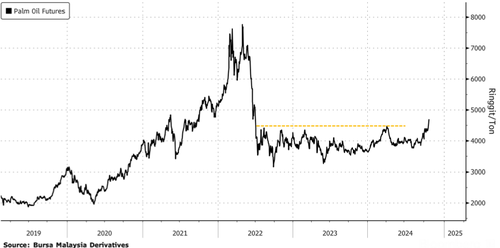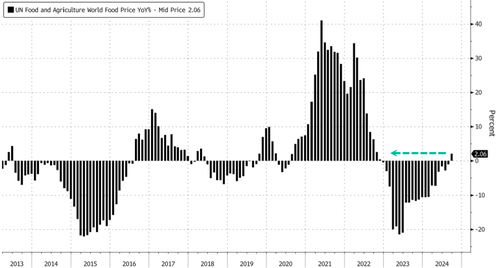
Palm oil futures surged to a two-year high on Monday amid mounting concerns over tightening supplies. As a staple edible oil for over three billion people, especially in Asia, soaring prices are a worrisome trend: global food inflation may be sticky.
Bloomberg reports palm oil futures reached the highest level since July 2022 on Monday morning. The vegetable oil has jumped more than 15% this month and is on track for the third consecutive month of gains on production woes across top-growing regions.
The latest data from the Indonesian Palm Oil Association shows palm oil production is estimated to drop to 51 million tons in Indonesia for the year, down from 54.8 million in 2023.
"The tropical oil has been strengthening on weaker output in Indonesia and Malaysia, which collectively account for more than 80% of global supply. Older trees and weather disruptions crimp production at a time when demand is rising. Firmer prices could boost food costs in top buyers India and China," Bloomberg noted.
Higher vegetable oil prices come as the latest print from the Food and Agriculture Organization of the United Nations' Food Price Index, which tracks the international prices of a basket of globally traded food, averaged 124.4 in September, up 3% from August and 2.1% higher versus the same month one year ago.
FAO's September rise was the first YoY increase in 18 months.
About one year ago, Sara Menker, founder and CEO of Gro Intelligence, warned in a Bloomberg interview that the current global food crisis is 'much worse than 2008'.
In late 2020, SocGen's Albert Edwards started to warn about the Federal Reserve blowing bubbles during the Covid pandemic and how it could spark a surge in food prices and the usually ongoing risks, such as social-economic instabilities.
Food inflation is very sticky and will remain so through the end of the decade - if not longer.
Our advice to readers: Buy farmland.
Palm oil futures surged to a two-year high on Monday amid mounting concerns over tightening supplies. As a staple edible oil for over three billion people, especially in Asia, soaring prices are a worrisome trend: global food inflation may be sticky.
Bloomberg reports palm oil futures reached the highest level since July 2022 on Monday morning. The vegetable oil has jumped more than 15% this month and is on track for the third consecutive month of gains on production woes across top-growing regions.
The latest data from the Indonesian Palm Oil Association shows palm oil production is estimated to drop to 51 million tons in Indonesia for the year, down from 54.8 million in 2023.
“The tropical oil has been strengthening on weaker output in Indonesia and Malaysia, which collectively account for more than 80% of global supply. Older trees and weather disruptions crimp production at a time when demand is rising. Firmer prices could boost food costs in top buyers India and China,” Bloomberg noted.
Higher vegetable oil prices come as the latest print from the Food and Agriculture Organization of the United Nations’ Food Price Index, which tracks the international prices of a basket of globally traded food, averaged 124.4 in September, up 3% from August and 2.1% higher versus the same month one year ago.
FAO’s September rise was the first YoY increase in 18 months.
About one year ago, Sara Menker, founder and CEO of Gro Intelligence, warned in a Bloomberg interview that the current global food crisis is ‘much worse than 2008’.
In late 2020, SocGen’s Albert Edwards started to warn about the Federal Reserve blowing bubbles during the Covid pandemic and how it could spark a surge in food prices and the usually ongoing risks, such as social-economic instabilities.
Food inflation is very sticky and will remain so through the end of the decade – if not longer.
Our advice to readers: Buy farmland.
Loading…








